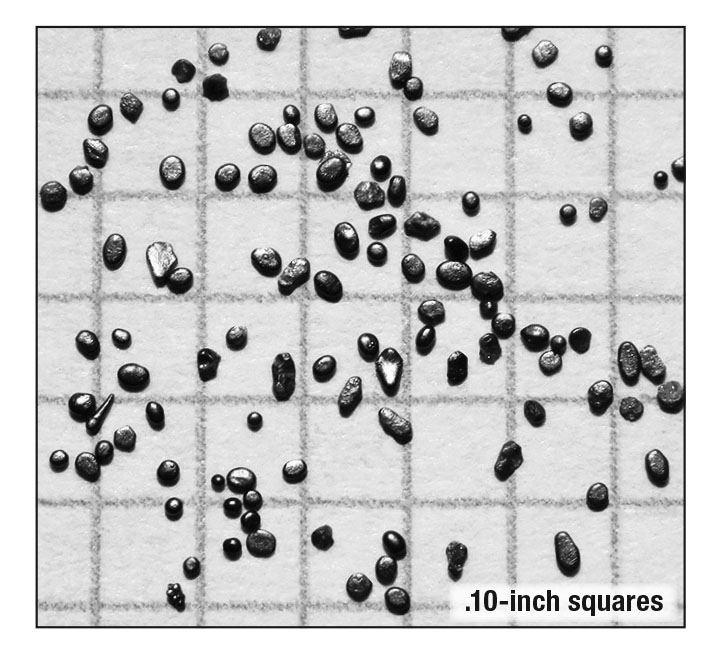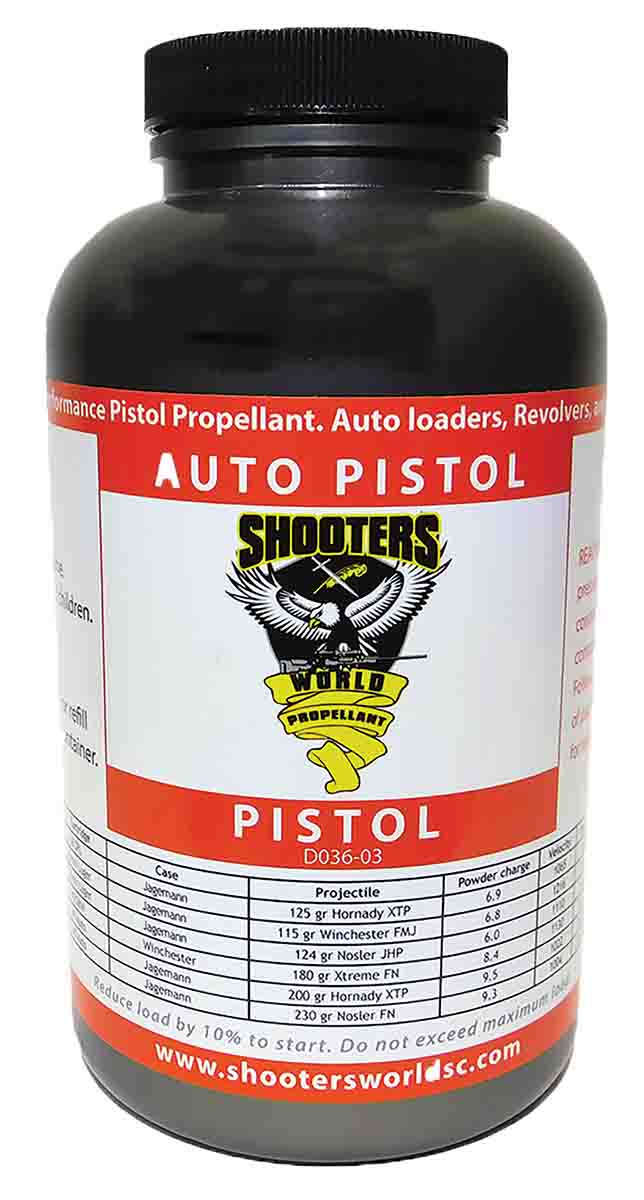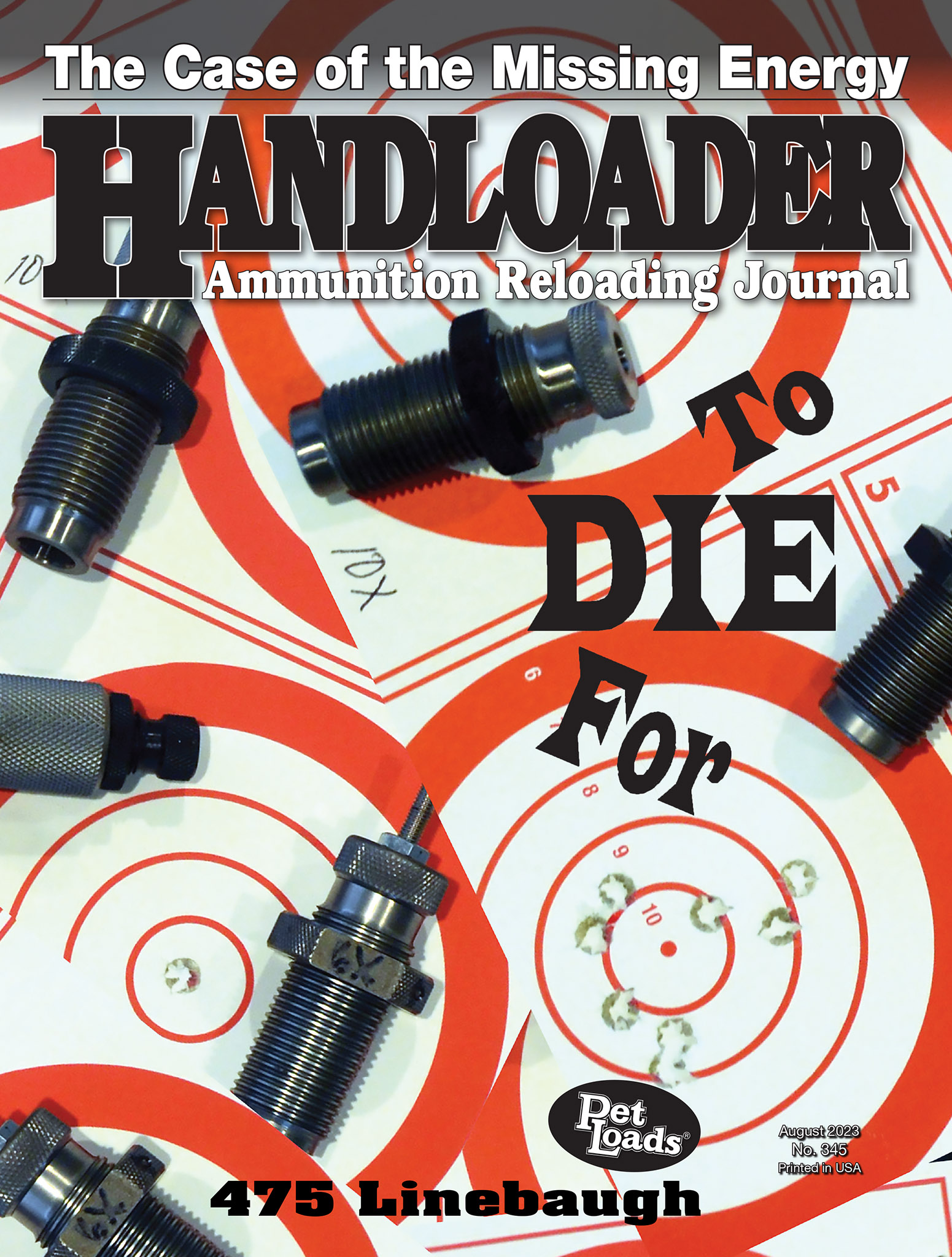Propellant Profiles
Shooters World Auto Pistol
column By: Rob Behr | August, 23

I had chosen to start with a maximum load listed on the Shooters World Auto Pistol label offering data for a Jagermann 45 ACP case and calling for a Nosler 230-grain flatnose bullet. I instead chose to use RWS 45 ACP cases using Winchester Small Pistol (WSP) primers in combination with a bullet that hadn’t been tested with that load. Frankly, I deserved what I got. Whether you are an experienced handloader or new to the game, here are the rules: start below the maximum tested load and only change one variable at a time while working up the load. Don’t take short cuts. They can be costly.

Auto Pistol is another one of the fine, double-base propellants produced by Explosia in the Czech Republic. In Europe, it is marketed as D036 by Lovex. Physically, Auto Pistol is uniformly dark grey to flat black with some reflective surfaces depending on the orientation of the powder granules. The grains are very small. When I finally managed to pick up one with my caliper, it measured .019 inch. Bulk density is .95gr/cc which promotes good flow characteristics from mechanical powder measures.
The first up for testing was one of Springfield Armory’s SA-35 pistols, a nicely executed spin on the classic Browning Hi-Power. The pistol is relatively new to me and I was anxious to wring it out for accuracy and reliability. A 6.8-grain charge of Auto Pistol and RMR’s excellent 115-grain roundnose combined for an average velocity of 1,272 fps. I’m not a fantastic pistol shot, but this load ran steadily around 3 inches at 25 yards. For a new pistol and load combination, it was a promising start. Things got better from there.
Pistol caliber carbines have always interested me. When Ruger offered its slick PC Carbine, I was quick to purchase one. They are compact and well-engineered firearms. Testing the same load I’d run through the SA-35 produced an average velocity of 1,450 fps, which represents a 14 percent increase in velocity and a 30 percent increase in energy.
The RMR TC (truncated cone) Matchwinner 124-grain bullets are simply in another league when it comes to punching paper. They are accurate, reasonably priced and leave clean, easily-scored holes in targets. I had high expectations for my SA-35 using these bullets. At a respectable 1,164 fps average velocity, I recorded one group of 1.8 inches from a seated and braced position off shooting bags. The rest of the groups were more open, but none exceeded 4 inches. The Ruger carbine produced an average of 1,276 fps and muzzle energy of 449 foot-pounds, an increase of 20 percent over the 4.7-inch barreled SA-35.
The 40 S&W may have lost a step or two in popularity over the last decade, but it is still a ferocious performer in the combat handgun arena. Charges of 8.4-grains of Auto Pistol powder made it easy to remember why the 40 S&W was once the most commonly used cartridge in American police service. My H&K USP produced remarkably consistent velocities that averaged 1,114 fps using Speer Gold Dot 180-grain hollowpoints. I hadn’t shot a 40 S&W in years, and it was a refreshing treat to rediscover the controllable authority of the big H&K automatic.
I also tested this load in one of KelTec’s innovative SUB2000 folding carbines. The carbine’s 16.25-inch barrel boosted the previously tested load to an average of 1,378 fps and increased its energy to more than 700 foot-pounds.
Getting paid to shoot is one of the best jobs in the world, but at some point, recoil and muzzle blast begin to make it seem like work. It was a genuine pleasure to switch from automatics to a heavy, Smith & Wesson Model 15 in 38 Special. Built by Davis Custom with a 1-inch diameter heavy barrel and an Aristocrat three-position adjustable sight rail, this Model 15 was built to rule in the IPSC Revolver class. It’s heavy, the trigger is beyond reproach and recoil is nonexistent.
A combination of 6.9 grains of Auto Pistol and a Sierra 125-grain JSP produced accuracy that proved to be distracting. Once the initial velocity and accuracy testing was completed, I still had a handful of ammunition left. Someone, owing to kindness or laziness, had left a bowling pin on the range. I spent more time than I should have plinking at it with these gentle-shooting 38 Special loads.
I don’t know how they do it, but the Czech powders have unusually low extreme velocity spreads. In my Model 15, with an average of 907 fps, the extreme spread was under 30 fps. If you removed one higher velocity shot out of the tested rounds, the average dropped to 19 fps. With wadcutter loads, this powder could be a real contender in bullseye competition.
My overpressure 45 ACP loads forced a second day at the range. Armed with new Winchester cases, Hornady 230-grain XTP bullets and a more pedestrian load of 8.2-grains of Auto Pistol, it was a better day of shooting. At an average velocity of 932 fps, the Kimber ran without a hiccup.
Extensive loading data for Shooters World Auto Pistol can be found at ShootersWorldPowder.com and LoadData.com.
.jpg)
.jpg)


